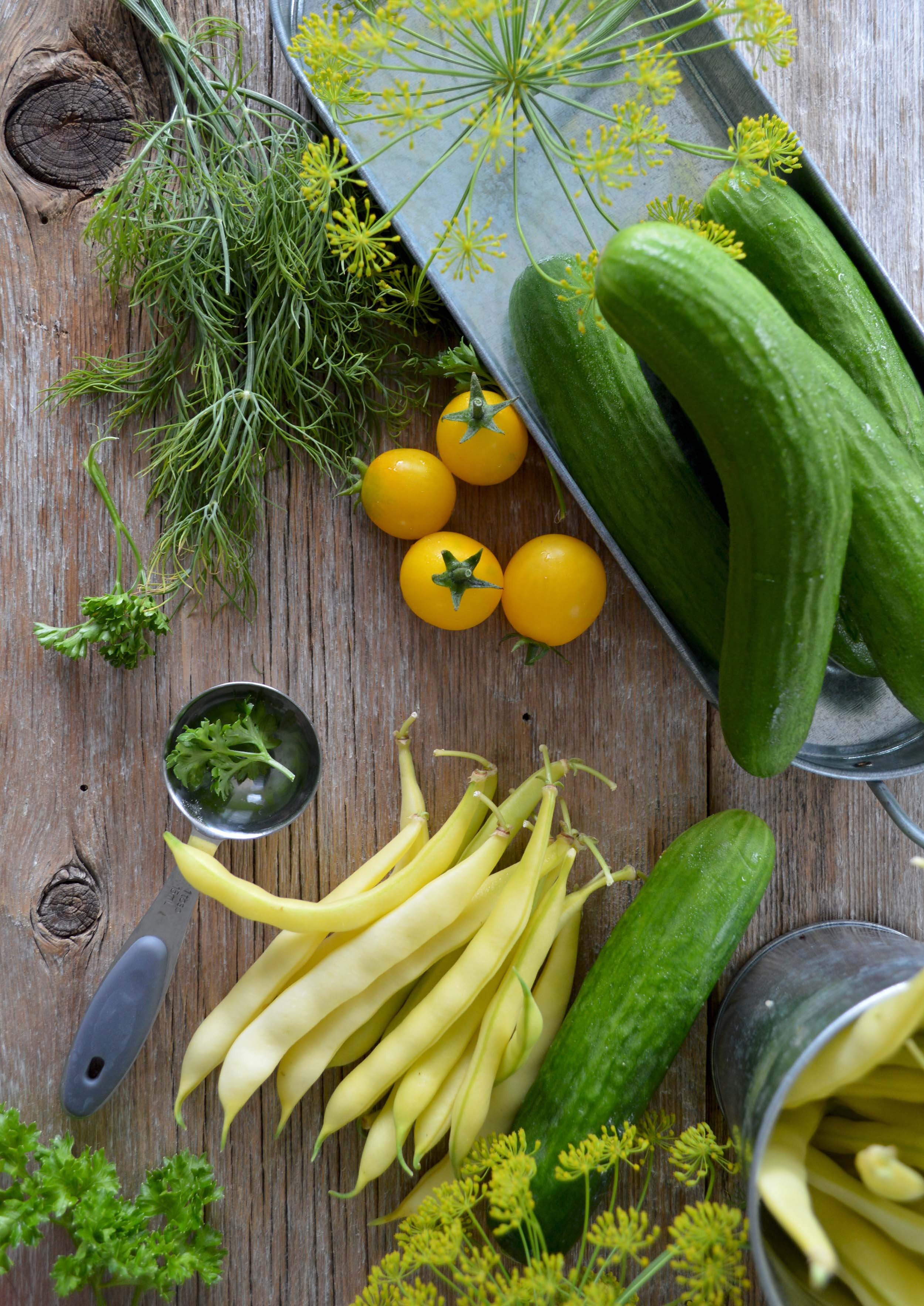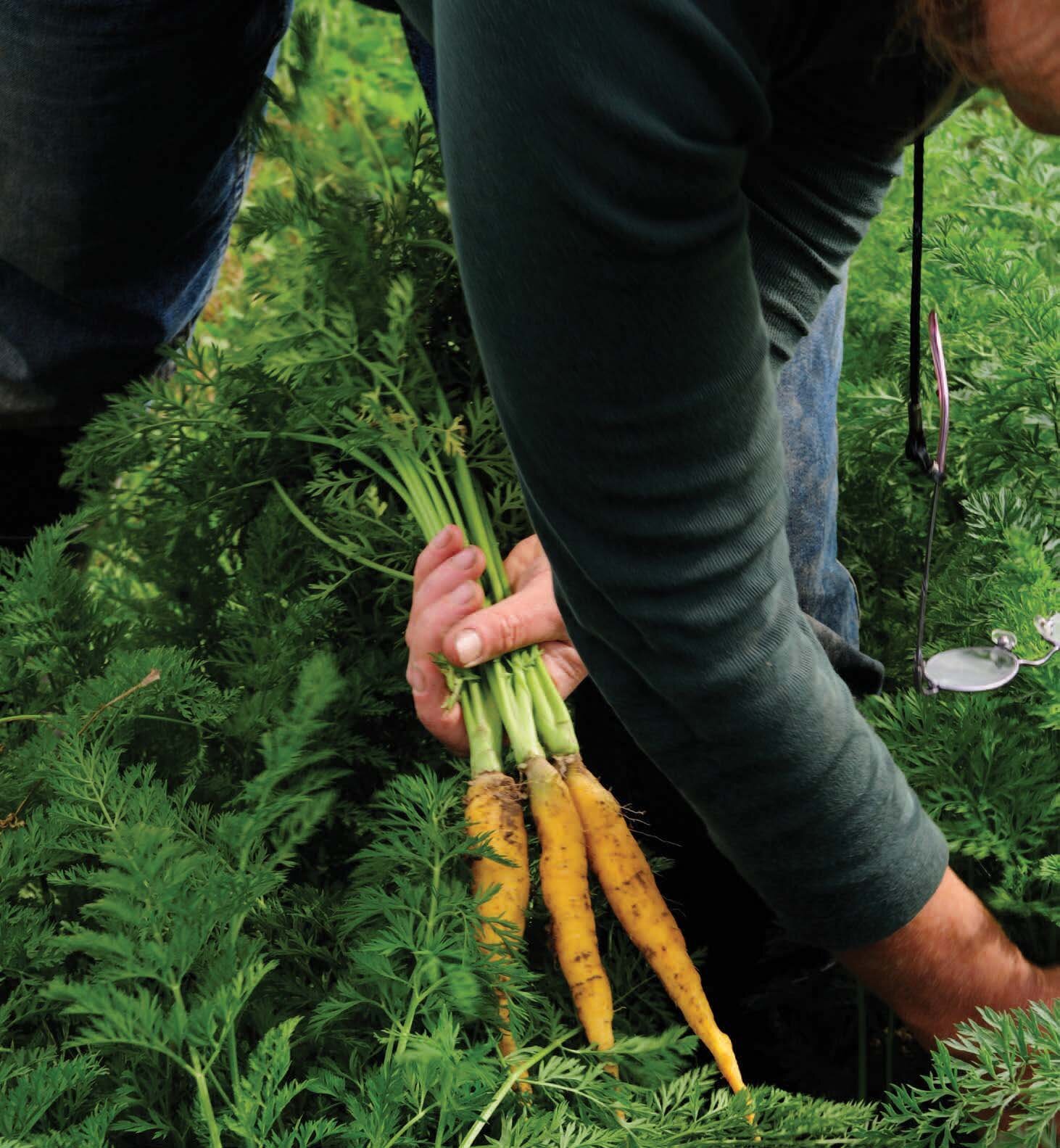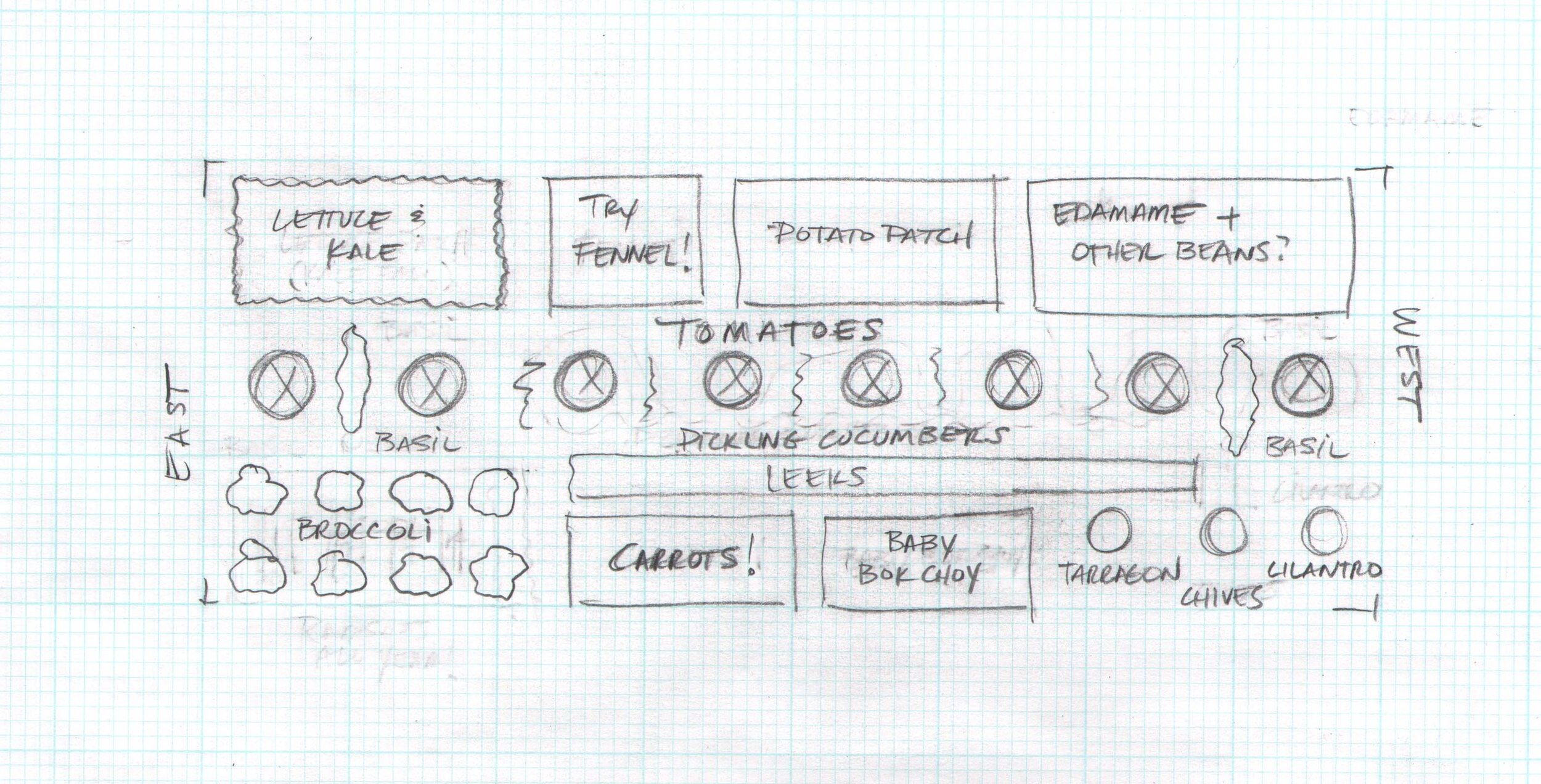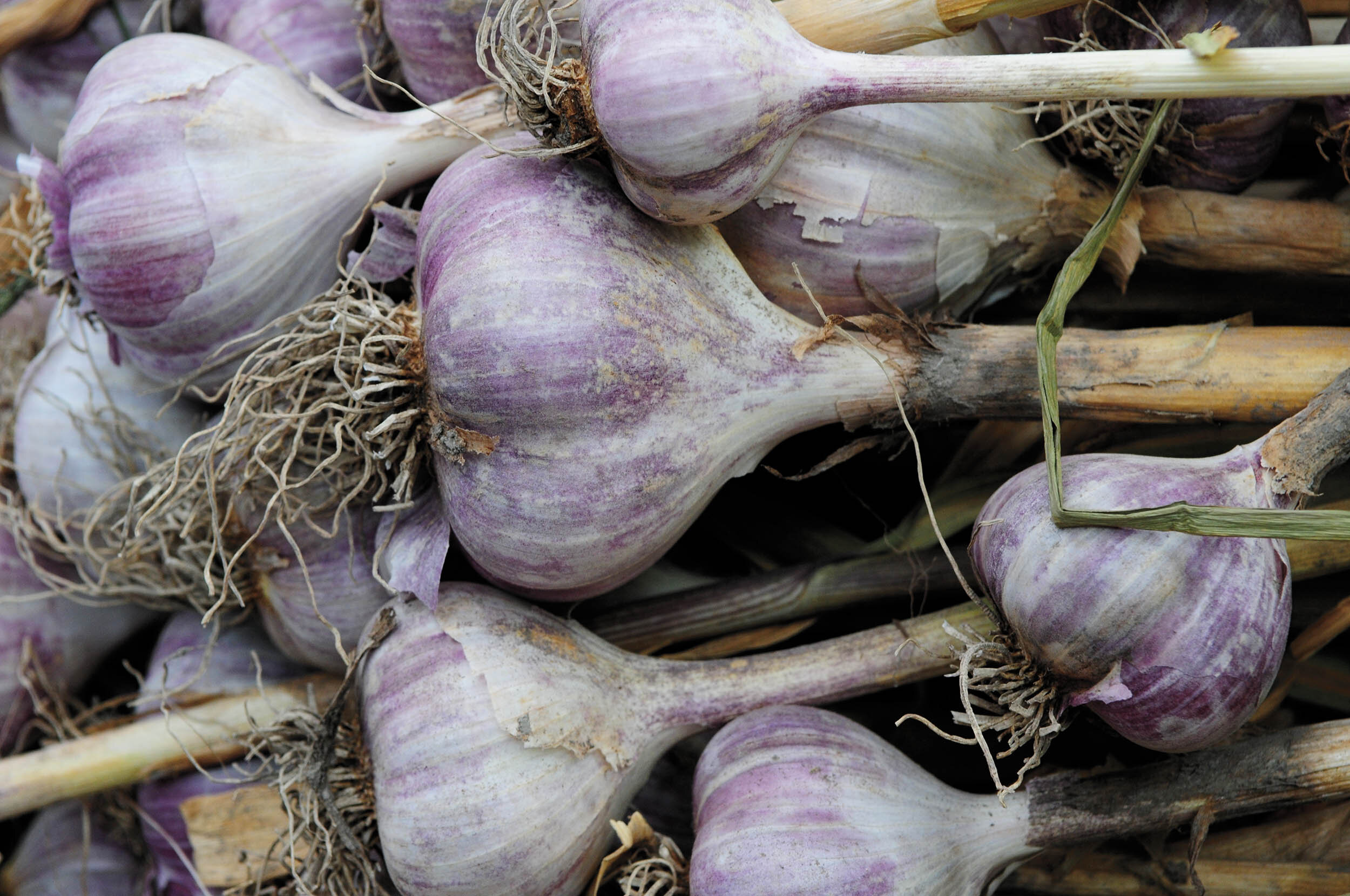Preserving The Harvest

I steal glances out the window and smile at the tall and lush tomato plants that ring the back of the house. Shortly, I’ll take a break from writing and enjoy one of the season’s Caprese salads, full of sweet cherry tomatoes from plants that began churning out ripe fruit in early June.
At my home, vegetable gardening has dual purpose: Consume and share the bounty, and preserve as much as possible along the way. I’m summer vegetable greedy and if reasonable effort can extend access to those flavors into the winter, I’ll do it.
For many, the word ‘preserving’ translates to canning, but it’s so much more. Yes, canning is a vital and time-tested part of preserving activities, but it’s only one. (Find great information on water-bath and pressure canning at FreshPreserving.com.) I also rely on freezing and dehydrating to save the beautiful summer produce from my garden and my local farmers’ markets. And even easier, some produce can be stored without any treatment at all.
If you’re intimidated by the super organized, perfectionist canners you know, pull up a seat next to me. Here are some doable-by-everyone tips and tricks that I use to save summer’s bounty for those cold winter months.
FREEZING
Of all the methods to preserve the harvest, freezing is the simplest and the most flexible. Canning aficionados would argue, rightly, that the risk of power failure looms large: One half-day’s outage ruins the entire season’s preserves. I do enough canning to relieve some of that worry, but the majority of my preservation efforts revolves around the freezer (especially since I purchased a chest freezer for the basement).
Freezing fruits and vegetables gives the cook maximum options: You can freeze many produce items whole (corn, peas, beans, blueberries, strawberries, tomatoes), and you can cook up your favorite sauces, stocks, jams, and dessert fillings later, exactly as you please, without worrying about the acidity balance that’s critical to safe canning. (Low-acid foods require pressurized canning because the acids are not strong enough to resist certain bacteria growth.) My go-to tomato sauce recipe is not acidified enough to be safe for water-bath canning, and recipes that are don’t suit my taste preferences. Freezing lets me have my sauce and eat it, too.
Some produce can go right from cutting board to freezer, but many preservation experts recommend blanching your vegetables before sticking them in the icebox. Blanching - a quick dip in boiling water, followed by a cold-water rinse - destroys enzymes that otherwise survive the freezing process and break down your produce internally over a period of weeks and months. It also preserves vibrant color and, reportedly, overall nutrient density.
Regardless of your preparation, the key to successful freezing is keeping the air out. Countertop vacuum storage units that seal the bags with a heat crimp do the best job of protecting produce from freezer burn and frost build-up. (I’ve had less success with cheap hand-held units that remote air through a port in the bag. They work at first, but eventually, air seeps in through the port.) Heavy duty zipper bags work well, too, as long as you can press out the air before sealing (so bumpy fruits and vegetables will fare better in a vacuum bag.)
When selecting fruits and vegetables for freezing, consider their water content and your tolerance for texture changes. The higher the water content - watermelon, tomatoes, cucumbers - the mushier they’ll be once thawed. That beautiful beefsteak tomato slice that made your summer BLTs the bomb will collapse in a sad puddle after a few months in the freezer. Freezing is not going to let you enjoy a mid-January Caprese salad, but that doesn’t mean there aren’t other stellar applications for those gorgeous heirloom tomatoes:
Cook up and freeze your favorite sauce recipe in quantities you normally use for a meal.
Make tomato paste and freeze 1-tablespoon quantities in ice cub trays (pop out and store in a big bag or container). Try cherry tomatoes for the best tomato paste - ever.
Freeze chopped or diced tomatoes for soups, stews, and chili.
If you love experimenting with new sauce recipes, freeze whole tomatoes so you’ll have maximum texture options (e.g., crushed, diced, pureed, as you require).
And my favorite tip for tomato canners everywhere: If you freeze a tomato whole, carve out the stem end first, and it will slip right out of its skin after thawing. No more blanching to remove the skins, and that means one less pot of boiling water steaming up your kitchen on canning day. Paste with Roma tomatoes is the best: One squeeze sends them shooting out the stem end.
After one particularly miserable late-August canning session, where condensation was streaming down every window in my home, I swore never to can tomatoes again. The freeze-thawed method saved and restored my canning mojo.
OPEN AIR & REFRIGERATED STORAGE
I have nostalgic feelings for old houses with features like double-door storm shelters and root cellars. I have rose-colored visions of storing my precious vegetables in a perfect moisture-balanced, grotto-like underground environment, accessible via a short jaunt down the stairs from the kitchen.
My mid-20th-century house has, rather, a leaky concrete-block basement. It’s cool, yes, but overly damp (and not in a good way) September through November, when I really need it to be more moderate for my potatoes, garlic, onions, and squash. But, in good years (when it’s fairly dry and cool), winter squash- butternut, kabocha, acorn, and spaghetti - will last many months on a shelf tucked away from drafts and light, without any effort or special treatment.
Garlic and onions should be cured first to set that protective outer skin and dry the stem, and then they, too, will store well, depending on the variety. My long-storing garlic lasted until this year’s spring issue was published. (See the three previous Garden columns for inspiration and information on growing and harvesting garlic.)
Potatoes are a bit fussier. They need a cool (40-50 degrees), dry, dark space to prevent rot and sprouting. Potatoes store moderately well in my basement, but just for a few weeks.
Root vegetables, such as carrots, parsnips, and beets, store very well in the refrigerator’s vegetable drawer. Keep them in plastic bags to retain moisture. (Tip: you can often revive limp carrots by soaking them in ice-cold water for several hours.) If storing with the greens attached, check frequently for rot, and remove them altogether within a week or two. Back in the day, home gardeners stored root vegetables in boxes of lightly dampened sand or sawdust, where they’d keep for months if not the entire winter.
Perfect, bruise-free apples also store well in the fruit drawer of a refrigerator. My grandparents wrapped apples individually in sheets of newspaper and stored them in their unheated basement.
DEHYDRATING
Finally, the method that I resolve to use with more frequency this year, because it’s just so cool. I purchased a dehydrator some years ago and have experimented with great success. The recipe insert that arrived with my model blew me away. I had no idea of the vast variety of foods that could be preserved right in one’s own home with this method; from beef jerky to fruit leathers, sliced vegetables, fruits, mushrooms, and dried herbs.
Home dehydrators are about the size of a food processor, square or round in shape, and come with a varying number of ventilated trays that hold sliced food to be dried. The dehydrating process circulates gently heated air around the trays for a specified number of hours or days, removing most of the moisture from a food product. In the almost complete absence of water, food-spoiling bacteria and mold do not form. Dehydrating retains an astonishingly high percentage of food’s nutrients compared to other preservation techniques.
Dried foods can be consumed as is (trail mix!), or added during cooking. I’m growing a ridiculous amount of peppers this year and plan to both freeze and dehydrate my harvest for quick additions to soups and stews. And then there’s garlic powder: A portion of each year’s crop gets earmarked for the best garlic powder I’ve ever tasted, courtesy of my dehydrator. (Use a spice grinder to pulverize dehydrated garlic cloves.)
Oven-dried kale chips are quite tasty, but dehydrated kale chips win the day, as you can season the even with wet ingredients (such as a red pepper paste) and create a wonderfully savory kale chip that’s crispy and not the least bit burnt. Fresh, leafy herbs can be air-dried by bundling and hanging, but running them through a dehydrator is more thorough and efficient.
Storage is what tipped me over into the dehydration camp. Since I’m not looking to preserve for the long term (as one might for emergency survival prepping), I can store my dehydrated goodies in airtight zipper bags in the pantry. The cooler the ambient temperature, the longer dehydrated foods will last. (Note that long-term storage requires extra steps to ensure an airtight, oxygen- and moisture-free environment. Research before you attempt it. There are affordable and readily available tools to help, such as a canning jar attachment for the countertop vacuum sealers mentioned above.)
My next preservation adventure will explore fermentation. I’m a big fan of fermented foods - sauerkraut, kimchi, kombucha (discovered thanks to our own local fermentation superstars, Fab Ferments) - and I’m excited to step into this new world.
Now’s the ideal time to gather an abundance of seasonal produce - with a bit of easy preparation, you’ll be enjoying sweet summer corn, ripe berries, and flavorful tomatoes all winter long.
Karen is a four-season vegetable gardener and seed-totable advocate, blogging at SoupAddict.com. Her current garden crushes include black heirloom tomatoes, dill, lovage, and a small bay laurel shrub that flavors her soups. Her most heartfelt wishes are for world peace (of course), kindness to animals, bike lanes in Anderson, and for everyone to grow something edible at home.





